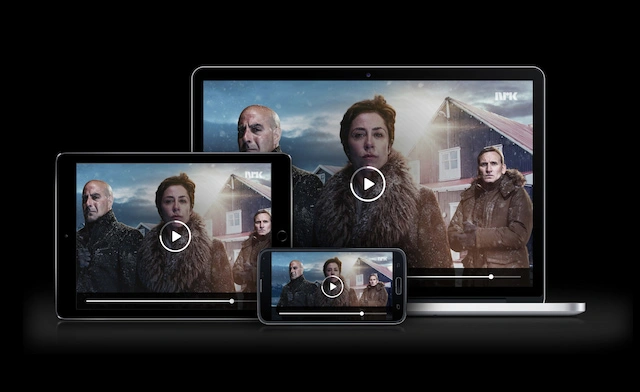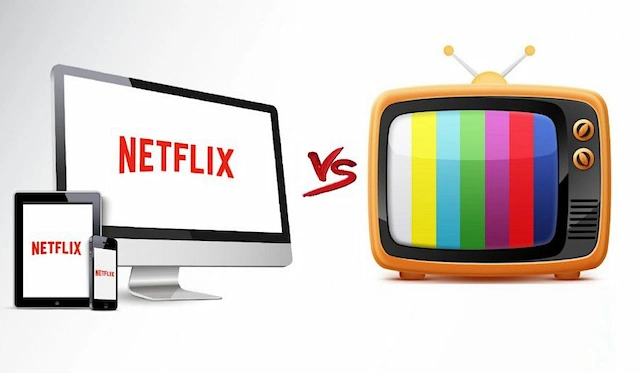Linear TV vs OTT: Make the Optimal Choice for Your Business
20/05/2023
1.26k
Table of Contents
These days, the terms Linear TV vs OTT are frequently used, and you may be wondering: What are the main differences? Since consumers’ watching patterns are evolving away from conventional television and toward digital streaming services, it is essential to grasp the distinctions between them and decide which platform most aligns with their marketing goals.
We’re here to help you comprehend these abbreviations and assist you in utilizing OTT and linear TV measurement to your advantage.
Understanding the Shift From Traditional TV to Digital Platforms
There has been a dramatic change in people’s TV viewing habits in recent years, with many switching from analog to digital broadcasts.
Rapid technological development is one of the primary contributors to the change. The growth of high-speed internet connections and linked devices has revolutionized how we access and process data. Obviously, the fixed programming schedules of conventional TV no longer fit with today’s consumers’ busy, on-the-go lifestyle, leading to digital platforms becoming more popular.

The rise of OTT services also plays a significant role in hastening the shift to digital media. Viewers may now watch their favorite episodes on these digital platforms anytime, from any location, and on any device they choose.
The move to digital media provides additional opportunities for contact and engagement with the business’s target audience. Businesses may engage more closely with their audience on digital platforms thanks to interactive elements like user-generated content, social sharing, and real-time feedback.
What is Linear TV?
Linear TV is traditional television broadcasting in which viewers observe prescheduled programs in real-time. This is also referred to as live or broadcast television. To observe a specific program on linear television, viewers must dial into a specific channel at a specific time.
The network or channel determines the programming beforehand. Therefore, viewers cannot delay, reverse, or fast-forward the content; they must adhere to the programming schedule. Consequently, consumers cannot access content on demand.

What is OTT?
OTT (over-the-top) delivers television and cinema content over the Internet at the consumer’s request and according to their preferences. OTT encompasses video-on-demand platforms and audio-streaming, texting, and voice-over-IP options.
The term “over-the-top” implies that a content provider is providing services in addition to extant Internet services. Simply having a reliable Internet connection – via a local or mobile network – is all that is necessary.

Linear TV vs OTT: Understanding the Differences
Below is a general comparison between Linear TV vs OTT, which can provide you with deeper insights into how businesses can apply these types of media for their marketing activities:
| Factors | Linear TV | OTT (Over-the-top) |
| Accessibility and Reach | • Limited reach, requires cable or satellite subscriptions. • Offers local reach. | • Broad accessibility through internet-connected devices. • Offers global reach. |
| Content Variety and Flexibility | • Limited channel options and fixed programming schedule. • The mix of live broadcasts and pre-recorded content. | • Vast content library, on-demand access to documentaries, and user-generated content. • Flexible viewing options. |
| User Experience | • Passive viewing experience, limited interactivity. • Traditional ad breaks during programming. | • Interactive features, personalized experiences, and user-driven content. • Users can skip or interact with ads. |
| Cost Efficiency | Higher production and distribution costs for advertisers due to commercial creation and airing. | Cost-effective options and ad-supported models reduce production costs. |
| Monetization Models | • Advertisers pay for specific time slots or ad placements. • Less pricing models available. | Various pricing models: • Ad-supported (impressions or click-through rates). • Subscription-based (monthly fee for ad-free access). • Transactional (content purchases or rentals). |
| Privacy and Security | • Limited data collection and targeting capabilities. • Relies on general demographic information for ad targeting. | • Advanced data collection and personalized ad targeting based. |

Within the Linear TV and OTT landscapes, it is essential to observe that specific offerings and features may differ between providers and platforms. When determining the most effective advertising strategy, businesses should carefully consider the factors above and their particular needs.
The Evolution of Broadcast Technology
The broadcasting industry has had incredible developments and shifts throughout the years. Since the dawn of radio and black-and-white television, digital broadcasting and streaming platforms have radically changed the industry. To stay up with the rapid development of broadcast technology, consider the following insights:

Embrace Digital Platforms
Businesses now need to look at digital channels to contact customers in light of the proliferation of streaming services and Over-the-Top (OTT) platforms. You can reach more people and appeal to a larger audience by investing in digital advertising, forming partnerships with streaming services, and creating content designed specifically for online consumption.
Adapt a Multi-pronged Approach to Distribution
These days, viewers watch shows and movies on various screens. Traditional broadcast channels, social media platforms, websites, smartphone applications, and linked TVs are all part of a comprehensive multi-channel distribution plan that businesses should implement. The more platforms included, the broader and more effective the customer reach will be.
Incorporate Data-driven Insights
The digitalization of broadcasting has given companies access to previously unavailable consumer data. Analytics and data-driven insights help businesses learn about their target demographics’ tastes, habits, and habits. Content creators, TV executives, and ad agencies may all benefit from this data.
Focus on Personalizing Customer Experiences
Consumers have come to demand highly customized content based on their tastes and preferences. Thanks to data analytics and AI-powered algorithms, businesses may now provide individualized services like content curation, ad targeting, and recommendation engines. Increased user involvement and commitment result from such individualized treatment.
Invest in Interactive and Immersive Experiences
With the introduction of futuristic technologies like Virtual Reality (VR), Augmented Reality (AR), and Interactive TV, businesses can offer customers more exciting and dynamic experiences. Companies may attract customers and stand out using these technologies in their content and advertising efforts.
Making the Right Choice for Your Business
The widespread exposure and audience that Linear TV provides are ideal for industries like fast-moving consumer goods (FMCG), automobiles, and home appliances. In addition, Linear TV might be a good fit for firms trying to reach the elderly, who prefer regularly scheduled content and live broadcasts.
Meanwhile, younger generations, such as millennials and Gen Z, are avid consumers of digital content, making OTT an effective marketing strategy for these subjects. IT, e-commerce, fashion, and entertainment businesses may reach today’s tech-savvy and digitally connected consumers using OTT’s adaptability and interactive features. Entertainment and media businesses may benefit significantly from OTT platforms due to the extensive content library.

Embracing Change and Making Informed Choices with SupremeTech
Deciding between Linear TV vs OTT is crucial for organizations looking to reach and interact with their intended demographic. Linear TV has a large audience and widespread appeal, but over-the-top (OTT) technologies allow for unique customization and adaptability.
However, the process of choosing a suitable platform is not simple. As a leading product-based development company, SupremeTech offers a comprehensive solution with our OTTclouds solution, designed to help your business navigate the complexities of Linear TV and OTT, thereby optimizing advertising efforts and maximizing ROI.
With OTTclouds, SupremeTech’s cutting-edge OTT streaming solution, your business gains powerful features and benefits, including seamless, high-quality video streaming, user-friendly customization, effective brand communication, and more.
If your business is interested in installing OTT platforms, please get in touch with us right away to learn more about our services and how we can help.
Related Blog





















